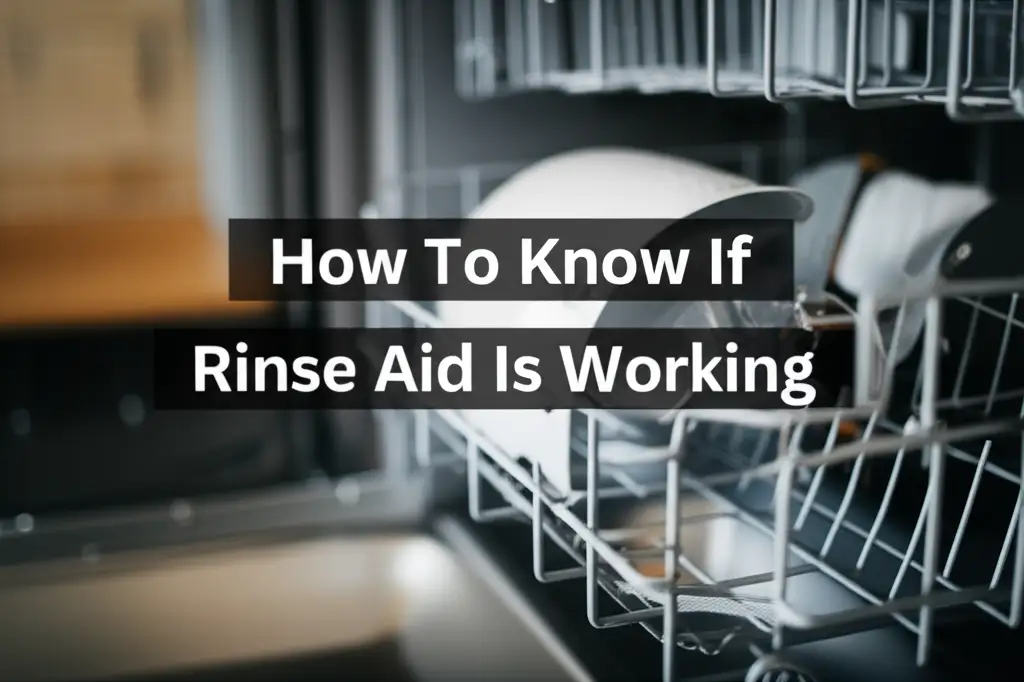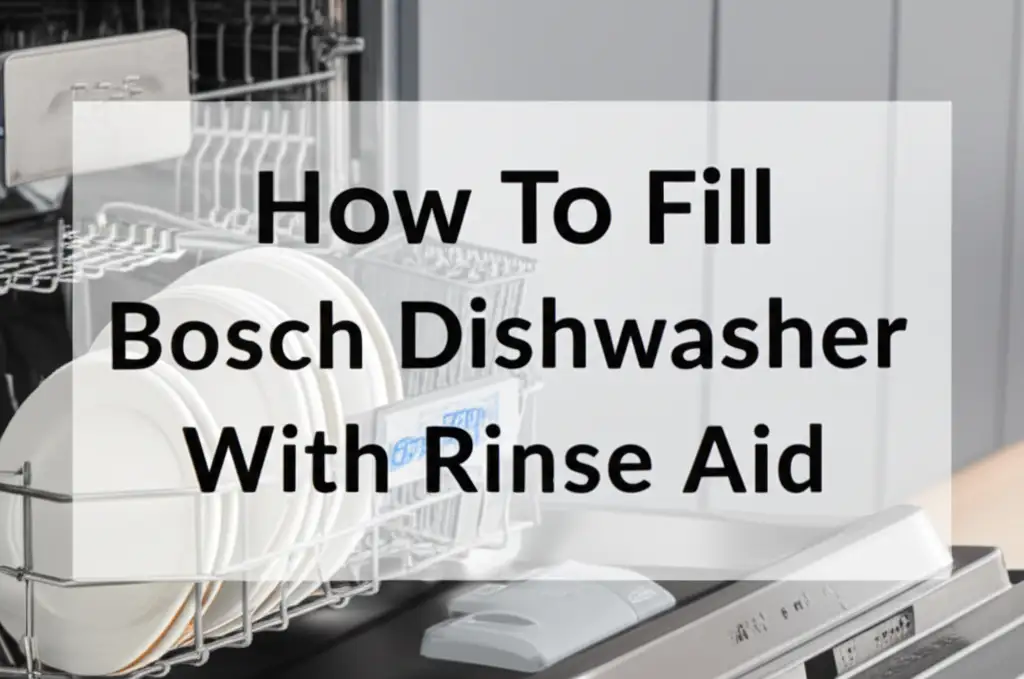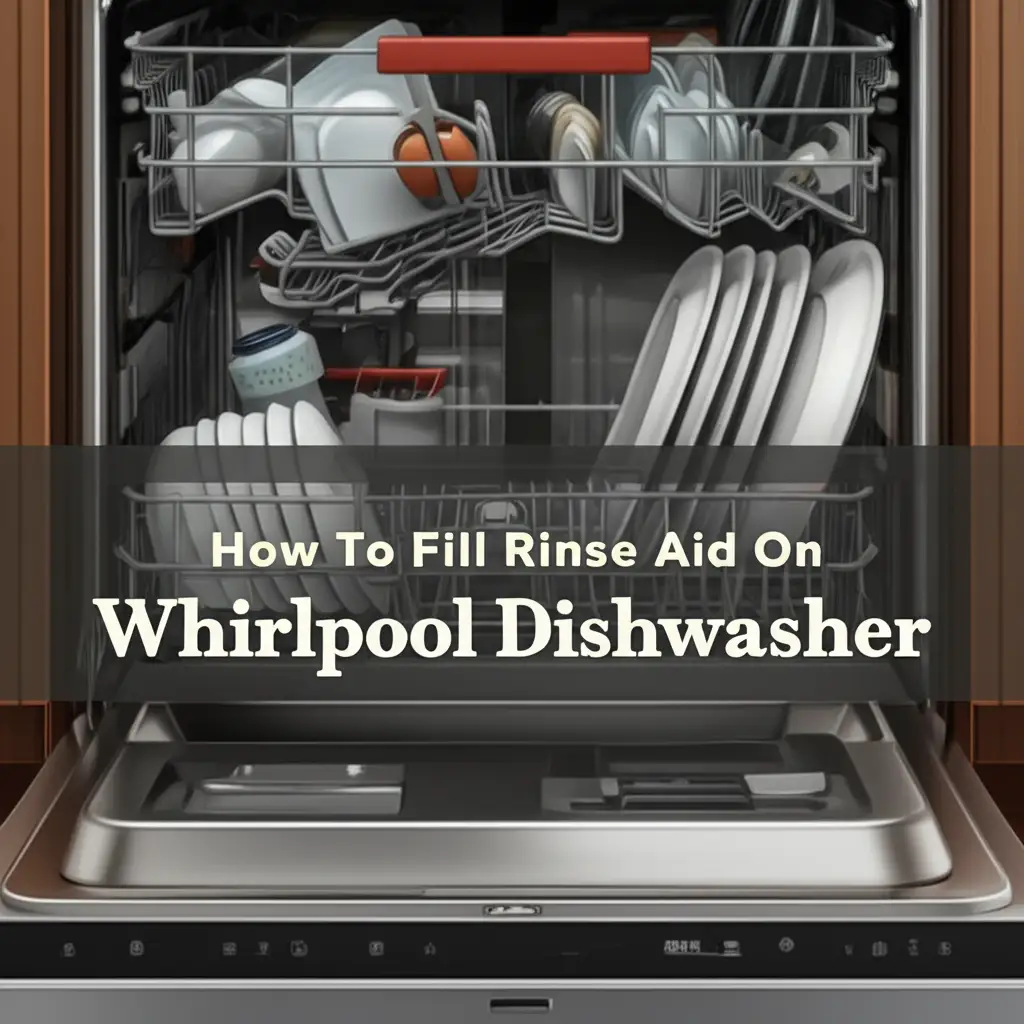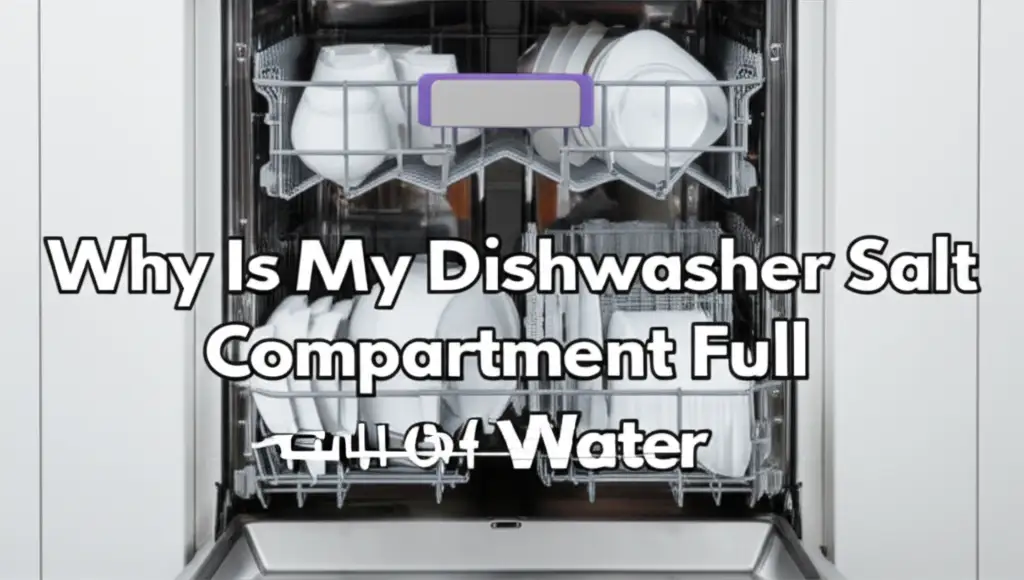· Katria Melrose · Dishwasher Maintenance · 17 min read
Why Wont My Rinse Aid Light Go Off
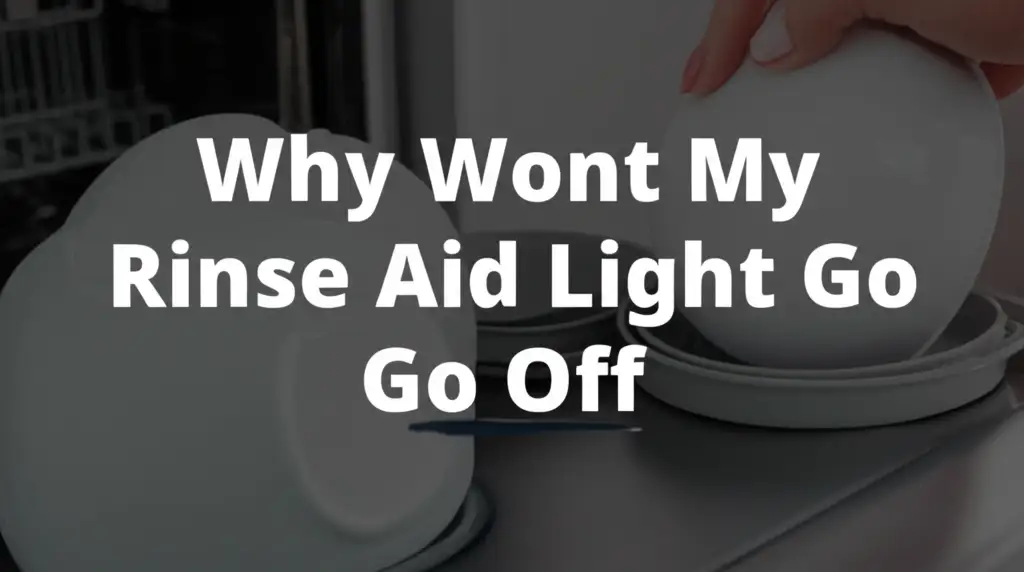
Why Won’t Your Dishwasher Rinse Aid Light Go Off?
It’s a common household puzzle: your dishwasher runs, your dishes come out clean, but that persistent rinse aid light stays on. You might have refilled the dispenser, yet the indicator light refuses to turn off. This can be confusing and makes you wonder if your dishwasher is truly working correctly. I understand this frustration. A stuck rinse aid light can signal anything from a simple oversight to a mechanical issue.
This article provides a clear guide. We will explore the main reasons why your dishwasher’s rinse aid light stays illuminated. I will explain how your rinse aid system works. Then, we will look at common problems like an empty dispenser or a faulty sensor. You will learn practical steps to troubleshoot and resolve this issue. By the end, you will know how to get that light to go off and ensure your dishes sparkle every time.
Takeaway:
- Ensure the rinse aid dispenser is fully filled, not just topped off.
- Check the dispenser for clogs or blockages that stop proper dispensing.
- Look for any residue or damage around the dispenser cap or opening.
- Consider a faulty sensor or main control board as a potential cause.
- Perform a hard reset on your dishwasher to clear any error codes.
Clear Answer to Why Your Rinse Aid Light Stays On:
The rinse aid light usually stays on because the dispenser is not full, the dispenser itself is clogged or damaged, or the sensor designed to detect rinse aid levels has malfunctioned. Less common reasons include a sticky float or an electronic control board issue.
Understanding Your Dishwasher’s Rinse Aid System
Every modern dishwasher has a rinse aid system. This system helps dishes dry without spots or streaks. The rinse aid liquid reduces water surface tension. This allows water to sheet off dishes rather than bead up. The system includes a dispenser and a sensor.
The rinse aid dispenser is a small compartment. You typically find it near the detergent dispenser. It holds the rinse aid liquid. During the rinse cycle, a small amount of rinse aid releases into the wash water. This release is usually automatic. The amount dispensed can often be adjusted.
A sensor monitors the rinse aid level. This sensor is inside the dispenser or close to it. It detects when the rinse aid supply is low. When the level drops below a set point, the sensor triggers the rinse aid light. This light tells you to refill the dispenser. When you add more rinse aid, the sensor should detect the full level. It should then signal the dishwasher to turn the light off. If the light stays on, it means the sensor is not correctly reading the new level. This points to a problem with either the filling process, the dispenser itself, or the sensor.
Common Reasons Why Your Rinse Aid Light Stays On
It is annoying when the rinse aid light refuses to turn off. Several common issues can cause this. I will explain the main culprits here. Understanding these helps you pinpoint the problem quickly.
Dispenser Not Fully Filled
The most common reason is a dispenser not actually full. You might add some rinse aid. However, if the reservoir is not completely topped off, the sensor may still read it as low. Many dispensers have a small window or indicator. You need to fill it until this window shows “full.” Some systems use a float that needs to rise to the top. If the liquid does not reach the float’s highest point, the light stays on. Ensure you pour slowly to avoid air bubbles. These bubbles can trick the sensor into thinking the dispenser is full when it is not. Always check your dishwasher manual for the correct filling procedure. Proper filling ensures the sensor registers the presence of enough rinse aid. You can find specific instructions for many brands, such as how to fill rinse aid on a Whirlpool dishwasher or how to fill a Bosch dishwasher with rinse aid.
Clogged or Blocked Dispenser
Sometimes, the dispenser itself gets blocked. Old rinse aid can dry up. It forms a sticky residue. This residue can clog the tiny opening where the rinse aid dispenses. If rinse aid cannot leave the dispenser, the sensor will never register empty, even if the light is on. The light may remain on because the system expects to dispense and then register an empty state, or it simply shows “low” because it cannot detect flow. Also, the filling tube or sensor area can become blocked. Soap scum or mineral deposits can build up. This buildup stops the rinse aid from flowing freely. It also prevents the sensor from correctly reading the liquid level. Inspect the dispenser opening. Look for any visible gunk or blockage. Clean it carefully with a small brush or a toothpick.
Malfunctioning Rinse Aid Sensor
A faulty sensor is a frequent cause for the light staying on. The sensor is a small, electronic component. It monitors the rinse aid level. If it breaks, it might send a constant “low” signal to the dishwasher’s control board. This happens even if the dispenser is full. Sensors can fail due to electrical issues or physical damage. They are often integrated into the dispenser unit. If you have confirmed the dispenser is full and clear of clogs, the sensor is likely the culprit. Replacing a faulty sensor can fix this issue. Sometimes, the sensor is just sticky. A thorough cleaning of the dispenser area can sometimes free a stuck float or sensor part. If you’re wondering why your rinse aid dispenser is not working at all, a faulty sensor is a prime suspect.
How to Properly Fill and Maintain Your Rinse Aid Dispenser
Proper filling and routine maintenance prevent many rinse aid light issues. I always make sure to follow these steps. They help keep my dishes sparkling and my dishwasher running smoothly.
Step-by-Step Filling Guide
Refilling your rinse aid dispenser is simple. However, doing it correctly is key to making the light go off. First, locate the dispenser on your dishwasher. It is usually on the inside door, next to the detergent compartment. Open the dispenser cap. It often twists or flips open. Pour the liquid rinse aid slowly into the reservoir. Fill it to the “max” line or until it reaches the top of the indicator window. Avoid overfilling. Overfilling can cause leaks and residue build-up. Once full, close the cap securely. A loose cap can lead to spillage during the wash cycle. After refilling, run a short cycle or test cycle if your dishwasher has one. This allows the system to register the new fill level. For specific dishwasher models, you might find detailed instructions like how to use the rinse aid for Whirlpool dishwashers.
Regular Dispenser Cleaning
Regular cleaning stops clogs and residue. Rinse aid can become sticky over time. It can block the small opening. To clean, wipe around the dispenser opening with a damp cloth. Use warm water and a little dish soap. A cotton swab or small brush can help reach tight spots. Pay attention to the cap and its seal. Ensure they are free of gunk. This helps the cap seal properly. Mineral deposits can also build up. White vinegar is good for breaking these down. Pour a small amount of vinegar into the dispenser. Let it sit for 15-20 minutes. Then, flush it out with water. This process helps keep the dispenser clear and functioning well.
Adjusting Rinse Aid Settings
Many dishwashers allow you to adjust the rinse aid dosage. If you use too little, you might see spots. If you use too much, you waste rinse aid. Check your dishwasher’s user manual. It will show you how to change this setting. This is typically done through the control panel. Adjusting the setting can sometimes help reset the system. It can also ensure the dishwasher is drawing enough rinse aid to keep the sensor happy. If your dishes are still spotty, or you notice excessive rinse aid consumption, adjusting the dosage can help.
Troubleshooting a Clogged or Damaged Rinse Aid Dispenser
A clogged or damaged rinse aid dispenser is a common reason the light stays on. The dishwasher cannot properly release the rinse aid. This prevents the sensor from resetting. I recommend checking these areas closely.
Inspecting for Physical Blockages
Start by looking at the dispenser. Open the cap. Shine a flashlight inside the reservoir. Look for any visible debris or hardened rinse aid. Sometimes, food particles or mineral deposits can get into the dispenser. Use a small, soft brush or a cotton swab to dislodge any blockages. Be gentle. You do not want to damage the dispenser. Also, check the small nozzle or opening where the rinse aid releases. This tiny hole can clog easily. A toothpick or a straightened paperclip can clear it. Ensure no residue blocks the float or sensor mechanism. This is often a small part that moves up and down with the liquid level.
Clearing Residue and Buildup
Rinse aid can leave a sticky film. Over time, this film can harden. It can create blockages. To clear it, use warm water and a mild detergent. Dampen a cloth and wipe down the inside of the dispenser. For stubborn buildup, try a solution of equal parts white vinegar and warm water. Pour it into the dispenser. Let it sit for about 30 minutes. The vinegar helps dissolve the residue. Then, drain it out and rinse thoroughly with clean water. You might need to repeat this step a few times for heavy buildup. This cleaning process helps ensure free flow. It also allows the sensor to detect accurate levels.
Checking for Dispenser Damage
Physical damage to the dispenser can also cause issues. Inspect the dispenser cap. Make sure it seals tightly. A cracked or ill-fitting cap can lead to leaks or prevent proper pressure. This can affect dispensing. Look at the dispenser body itself. Are there any visible cracks or chips? Damage can stop the dispenser from holding liquid. It can also disrupt the sensor’s function. If you find significant damage, you may need to replace the entire dispenser unit. Dispenser units are often available as spare parts. Replacing a damaged unit ensures the system works correctly.
Addressing a Faulty Rinse Aid Sensor
If the dispenser is clean and full, the sensor is likely the problem. A faulty sensor sends the wrong signal. This keeps the rinse aid light on. Fixing a sensor requires a bit more technical skill.
Diagnosing Sensor Malfunction
First, you need to confirm the sensor is faulty. You have already checked for a full dispenser and clogs. If the light remains on, the sensor is the next logical step. Some dishwashers have a small float inside the dispenser. This float rises with the rinse aid level. If the float gets stuck down, it will always read “low.” Gently push the float up and down to ensure it moves freely. If it feels stiff, try cleaning the area around it. Use a bit of warm water and a cotton swab. If there is no visible float, the sensor is likely electronic. These sensors can fail internally. You might need a multimeter to test an electronic sensor. However, this often requires disassembling the door panel.
Replacing the Rinse Aid Sensor
Replacing a rinse aid sensor can be complex. The sensor is often integrated into the dispenser assembly. This means you might need to replace the entire dispenser. Consult your dishwasher’s service manual for specific instructions. It will show you how to access the dispenser. Usually, you need to remove the inner door panel. Disconnect any wires attached to the dispenser. Carefully remove the old dispenser. Install the new one. Reconnect the wires. Then, reassemble the door. Ensure all connections are secure. If you are not comfortable with this type of repair, consider professional help. A new dispenser unit usually solves the problem of a stubborn rinse aid light.
Professional Assistance for Sensor Issues
If you are unsure about replacing the sensor, call a professional. Appliance technicians have the right tools and expertise. They can diagnose the issue accurately. They can also replace the part safely. Attempting complex repairs without proper knowledge can cause more damage. It can also void your dishwasher’s warranty. A technician can quickly confirm if the sensor is the problem. They can then replace it efficiently. This saves you time and potential headaches. For persistent issues, a professional visit is often the best solution.
Resetting Your Dishwasher and Other Advanced Solutions
Sometimes, a simple reset can fix the rinse aid light problem. If basic troubleshooting steps do not work, consider these advanced solutions. They can resolve glitches in the dishwasher’s electronic system.
Performing a Hard Reset
A hard reset can clear temporary errors. This is similar to restarting a computer. To do a hard reset, first, unplug your dishwasher from the power outlet. If it is hardwired, turn off the circuit breaker that supplies power to the dishwasher. Wait for about 5 to 10 minutes. This allows the control board to fully discharge. After the wait time, plug the dishwasher back in or turn the circuit breaker back on. Then, open the dishwasher door. Add rinse aid if you haven’t already. Close the door and select a wash cycle. See if the rinse aid light goes off. This simple step often resolves electronic glitches that keep indicator lights illuminated.
Checking the Main Control Board
The main control board manages all dishwasher functions. This includes the rinse aid system. If the sensor is fine and the dispenser is working, the control board might be faulty. A bad control board can send incorrect signals. It can keep the rinse aid light on even when everything else is correct. Diagnosing a faulty control board is difficult. It usually requires specialized tools and knowledge. Look for signs of damage on the board, like burn marks or loose connections. Replacing a control board is a complex repair. It is often expensive. For most people, this is a job for a professional appliance technician.
Considering Software Updates or Recalls
Modern dishwashers sometimes have software. These systems can develop bugs. Manufacturers occasionally release software updates to fix issues. Check your dishwasher manufacturer’s website. See if there are any available software updates for your model. Sometimes, there are also product recalls for known defects. A recall might address a faulty sensor or control board. Enter your dishwasher’s model number on the manufacturer’s site to check for recalls. These updates or recalls are less common for a rinse aid light issue. However, they are worth investigating if all other troubleshooting fails.
When to Call a Professional Appliance Technician
You have tried everything. The rinse aid light still shines brightly. This is the time to consider professional help. Knowing when to call a technician saves you time, frustration, and potential further damage to your appliance.
Signs You Need Professional Help
Several signs suggest it is time for a professional. If you have followed all troubleshooting steps—ensuring the dispenser is full, clean, and free of visible damage—and the light remains on, the problem is likely internal. This often points to a faulty sensor or control board. If you cannot access the components, or if you feel uncomfortable with the disassembly required, a technician is your best bet. Furthermore, if you notice other unusual behaviors from your dishwasher, such as error codes appearing, cycle interruptions, or poor cleaning performance, it could indicate a more complex issue that requires expert diagnosis.
Benefits of Professional Repair
Calling a professional appliance technician offers several benefits. First, they have the experience and specialized tools to diagnose the problem accurately. They can quickly identify if the sensor, control board, or another hidden issue is at fault. Second, technicians can perform the repair safely and effectively. They are familiar with various dishwasher models and their internal workings. This minimizes the risk of further damage. Third, professional repairs often come with a warranty. This gives you peace of mind that the fix will last. Finally, a technician can often source original parts more easily. This ensures compatibility and reliability.
Cost Considerations for Professional Service
Professional repair costs vary. Factors include the brand of your dishwasher, the specific part needed, and labor rates in your area. Replacing a rinse aid dispenser or sensor might be a moderate cost. Replacing the main control board can be more expensive. Before agreeing to a repair, ask for a clear estimate. Understand what is included in the price. Sometimes, if the repair cost is very high, especially for an older dishwasher, buying a new appliance might be more economical. A technician can help you weigh these options. They can advise you on the cost-effectiveness of repairing your current dishwasher versus replacing it.
FAQ Section
Why is my rinse aid light on even after filling it?
Your rinse aid light stays on even after filling it because the dispenser might not be full enough for the sensor, the dispenser opening could be clogged, or the rinse aid sensor itself may be faulty. Ensure you fill the dispenser completely to the maximum line.
How do I reset the rinse aid light on my dishwasher?
To reset the rinse aid light, first, confirm the dispenser is completely full. Then, try performing a hard reset on your dishwasher. Unplug it or turn off its circuit breaker for 5-10 minutes. This often clears electronic glitches causing the light to stay on.
Can I run my dishwasher if the rinse aid light is on?
Yes, you can run your dishwasher even if the rinse aid light is on. The dishwasher will still clean your dishes. However, your dishes might not dry as spot-free as they usually would, and they may have water spots or streaks.
Where is the rinse aid sensor located in a dishwasher?
The rinse aid sensor is typically located inside or directly adjacent to the rinse aid dispenser compartment. It is designed to detect the liquid level. In some models, it might be a simple float mechanism, while others use electronic sensors integrated into the dispenser unit.
How often should I refill the rinse aid dispenser?
How often you refill the rinse aid dispenser depends on how often you run your dishwasher and the rinse aid dosage setting. For average use, you might need to refill it once a month or every few weeks. The rinse aid light signals when it needs a refill.
What causes a dishwasher rinse aid dispenser to clog?
A dishwasher rinse aid dispenser can clog due to dried rinse aid residue, hard water mineral deposits, or occasionally small food particles entering the compartment. Regular cleaning with warm water and white vinegar helps prevent these blockages and keeps the dispenser clear.
Conclusion
A persistent rinse aid light on your dishwasher can be perplexing, but it’s often a solvable problem. We have explored the main reasons why your rinse aid light won’t go off, from simple empty dispensers to more complex sensor malfunctions. I hope this guide helps you diagnose and fix the issue. Remember to always ensure the dispenser is truly full, inspect for clogs, and clean the area regularly. If those steps do not work, consider a sensor problem or a system reset.
Most common issues are easy to resolve with a bit of troubleshooting. By following these steps, you can save money on repair calls and enjoy spot-free dishes. If you have tried everything and the light remains, do not hesitate to call a professional technician. They can offer specialized help. Keeping your dishwasher in top condition ensures it performs its best every wash cycle. Make sure your rinse aid light is off for perfectly sparkling dishes!
- dishwasher troubleshooting
- rinse aid issues
- appliance repair
- kitchen tips
- spotless dishes
- dishwasher indicator light
- rinse aid dispenser


